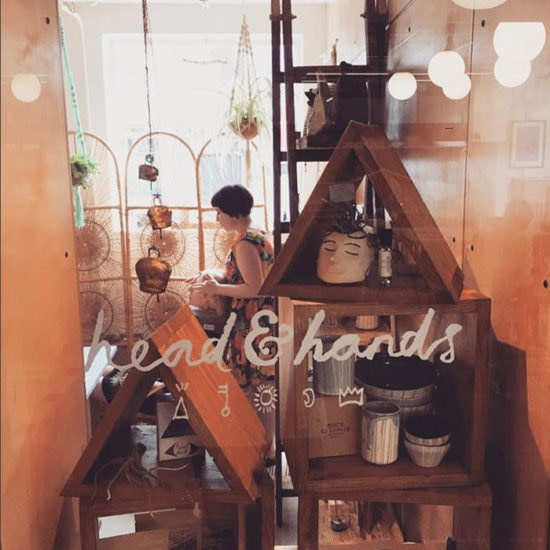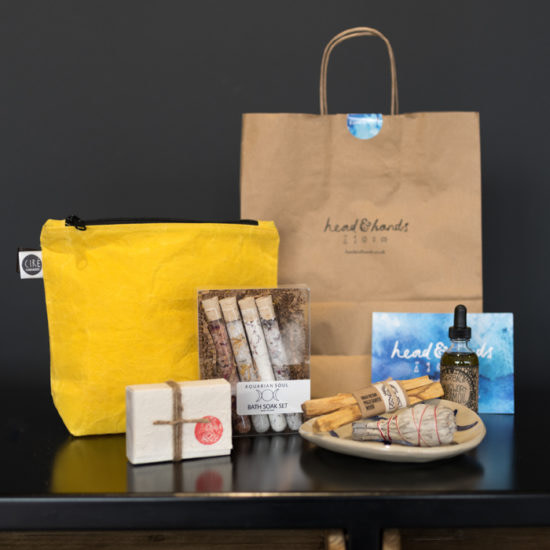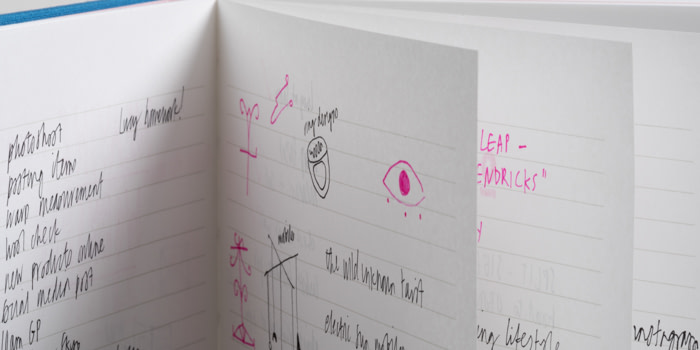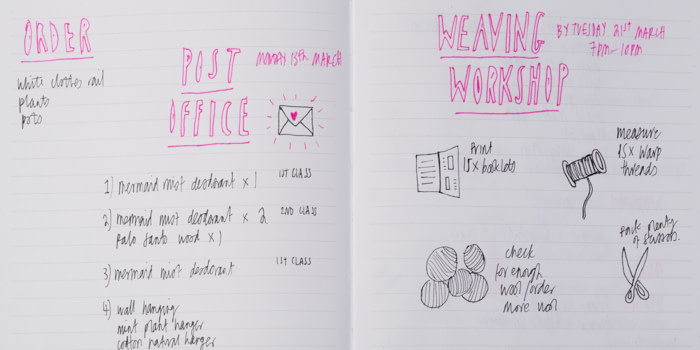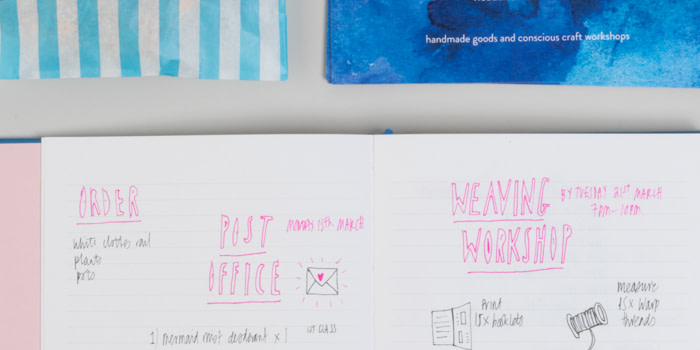From IRL to online: building a business with soul
Growing a business is about more than a strong product – it’s about finding a big idea, a motivation that keeps you going. We met Amanda Wayne, founder of online self-care sanctuary Head & Hands to find out how she did it (and why she loves her MOO Notebook).

Growing a business is about more than a strong product – it’s about finding a big idea, a motivation that keeps you going. We met Amanda Wayne, founder of online self-care sanctuary Head & Hands to find out how she did it (and why she loves her MOO Notebook).
Small businesses with big hearts, those with purpose rather than product as their engine, have a stronger opportunity to flourish in today’s online economy than ever. We’re always delighted to find, among our community, those entrepreneurs who’ve set out not only to build a business, but to bring to life an idea. London-based entrepreneur and designer Amanda Wayne was driven to start a business, Head & Hands, with a strong idea about wellbeing at its heart.

What does Head & Hands do?
Head & Hands is a three-armed business. First, it’s a curated store of handmade products. Second it hosts conscious craft workshops run by me or guest artist makers. And the third thing is actually what started me off in the first place – Indian head massage.
The name ‘Head & Hands’ is all about making a connection with yourself – keeping your hands busy and your mind happy. I try to find ways to help people pause, be with themselves and feel happy and relaxed.

Where did the idea come from?
I have some chronic health issues, and I found myself seeking more holistic help for my illness. The place that I realised I needed to start was in making space to relax. I went to see a facial reflexologist – yes, like on the feet, but on the face! It was incredible! She really sorted me out, but she also had this amazing space. It was a real sanctuary.
We’d have incredible chats when I went in for a treatment and I felt very listened to and cared for. That’s when I started to think a lot about how I wanted to do something similar, but involving my background in art and making too. So I did a course in Indian head massage, which also brings together the relationship between head and hands.
How did your background in design lead you here?
Prior to Head & Hands, I was working for a design studio, doing a lot of community engagement work, running creative workshops. I worked with communities where there was going to be something changing – I helped them shape some of the design decisions that were being made in their environment.
I studied graphic art and design at university, then started working in schools, bringing together my art experience and working with people. People have always been at the centre of what I do, which is what led me to realise that there’s actually something really interesting about what happens to people when they’re making. It’s the soothing power of craft. I’ve worked with quite vulnerable people who can just transform when they’re learning, making and working with their hands.
After I first set up my business after university as an illustrator/graphic designer, my brand name was ‘With your hands’, because I was really interested in tactile work and the low-tech. I’ve always been about getting away from technology and getting back in your body. Looking back now, I can see all the links with all the jobs I’ve done before – it is all relevant.
How did you find your shop space?
It’s a strange story – I did my massage course, not knowing exactly why, just feeling like I wanted to do something new, then a space became available in my local area, Walthamstow. There was an incubator project running to help start businesses off. So I realised I could pull together not just a massage space, but more than that – I knew artists and makers so I realised it made sense to also be selling some things. Plus I run workshops, it’s what I’ve always done, so why don’t I bring all of these things together?
At this point, I had no furniture, no stock, just an idea on paper that had poured out of me when I wrote the application. I had a name, but it was no more than that – it was just an idea that seemed right.
I found myself in an interview for the space and they offered me it then and there. I only had a month and some measurements to work with – there was a moment where I taped out in my block’s hallway the size of the shop and had to put all my furniture out there to try and see how I was going to fit it all in. The shop was so small!
How did you find your suppliers?
All the products that I sell are focused and selected around self-care, well-being and looking after yourself, as well as celebrating the work of lots of different makers. The rule is that everything is hand-made, and I know a lot of jewellery designers and ceramicists so I had a core range ready made. I’m also a bit of a magpie on Instagram, so I found a bunch more I liked the look of and contacted the makers. Instagram’s a great way for me to find other makers, because it’s so visual and you can get a really clear picture of the ethos.
I gave all of these great makers the idea of this shop that didn’t actually exist yet and asked them if they wanted to be involved – they all said yes! So I started ordering things – like some really unusual products from America’s herbalism scene. They have some people making amazing potions and things you can’t get over here.
How did you mix these disciplines in one shop?
I had no idea how much stock to buy in – I just started buying. And of course, I was on a tight budget. I managed to get friends to help me build furniture and found some amazing things on eBay. I really didn’t think it was going to work out but it just all came together – it felt like a sign. I’ve never done this kind of buying for a shop before, so there were a load of new skills I had to learn.
The launch night was amazing. I’m normally a real procrastinator who can’t commit to decisions quickly but with the shop, I had to be really focused and just get it done. Because it happened at such speed – it happened exactly how it needed to happen.
A lot of people commented that I’d curated it really nicely and it’s that word – curated – that sums up what I really want Head & Hands to become. Positioning myself as the curator of a lot of really curious products and sharing the stories behind them.
When the incubator term ended, how did you try and give the same experience online?
There’s nothing quite like the connection you build up with your customers when you’ve got a physical shop – we’d have some great conversations when they’d come in, there was no urgency to buy and get out, it was about creating a lovely environment to be in.
Online you can’t quite create the same experience, it’s not as tactile, but that’s something I’m learning to work around at the moment. One of the things I’m doing is looking at creating a podcast about some of the makers and their products to make the online space come to life again. It’s an interesting transition.
There is of course the opportunity to pack up and personalise people’s orders though, which I what I’ve been really enjoying. I write everyone a little love note when I post them their box, and I’ve got stickers with uplifting messages on too, so the whole experience of unboxing the products is an act of self-care. It’s the equivalent of me having a lovely conversation with a customer.
You have a lot to balance – how does your MOO Notebook help?
It’s so luxurious – and sturdy! I can be quite clumsy, spilling things on my books and things, and it was nice to have something I was taking quite a lot of pride in. Having the page-protector, having a bit of discipline around having a journal for my own spiritual practice, as an act of self-care.
I’m guilty of spending too much time on my phone and all of those things, and it’s really good to get back in with a really nice book. I really like the lay-flat pages, particularly in the centre section where you can spill a drawing over two pages.
I use it for a mixture of things, as it’s so open to different uses. I use it to write to-do lists, to build a week plan, to sketch out ideas… I can be quite fearful of using books – I usually end up drawing on bits of paper and stapling them together, but this is such a welcoming design, I was unafraid to draw on the pages. It’s got the structure of the lines, but they’re quite faint, which I think is like the book saying to me, “There’s rules if you want, but you can break them.”
Follow Head & Hands
Twitter: @headandhands_
Instagram: @headandhands_
Facebook: headandhandslondon
Keep in touch
Get design inspiration, business tips and special offers straight to your inbox with our MOOsletter, out every two weeks.

